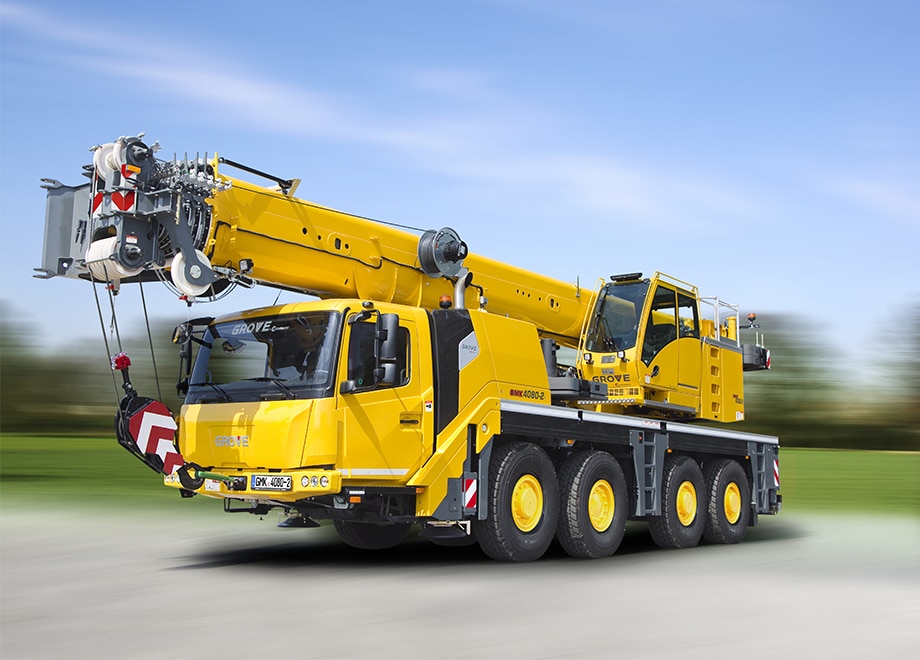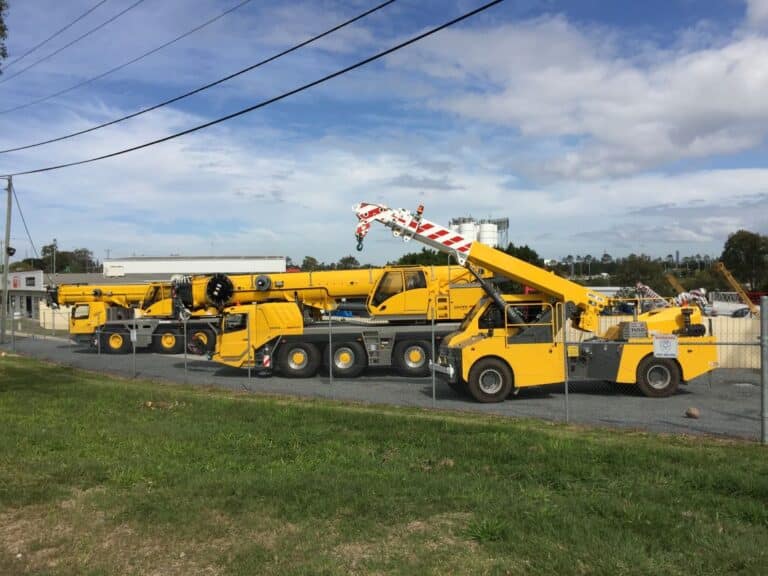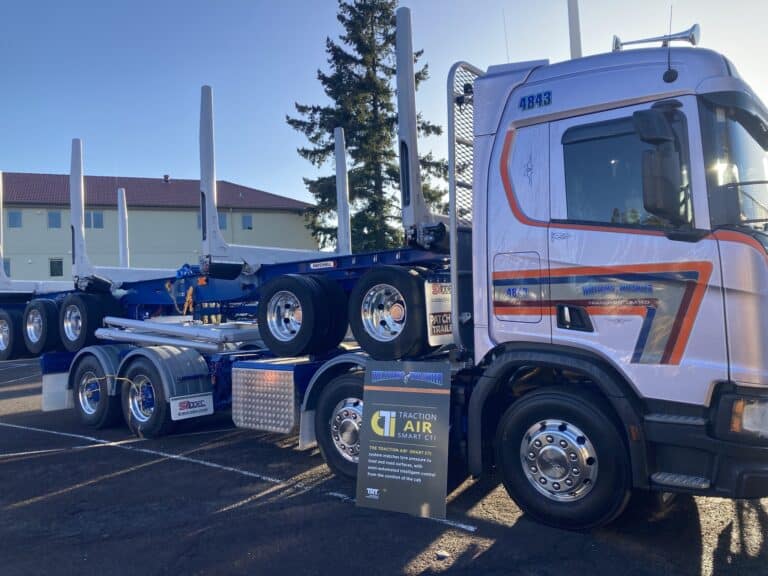All-terrain cranes, with their exceptional versatility and adaptability, have become an indispensable asset in the Australian infrastructure landscape.
These powerful machines, capable of operating in a wide range of terrains and conditions, play a pivotal role in constructing and maintaining our nation’s vital infrastructure.
From towering skyscrapers to sprawling highways, all-terrain cranes are at the forefront of shaping Australia’s modern skyline.
Understanding All-Terrain Cranes
An all-terrain crane is a type of mobile crane equipped with multiple axles and off-road tires, allowing it to traverse challenging terrains with ease.
Unlike other cranes, which are often limited to specific environments, all-terrain cranes can operate on various surfaces, including rough terrain, muddy ground, and even steep inclines. This versatility makes them ideal for infrastructure projects in diverse Australian landscapes.
Compared to other types of cranes, such as mobile cranes and tower cranes, all-terrain cranes offer several advantages. They are more manoeuvrable and can be easily transported to different job sites.
Additionally, their ability to extend their booms to significant heights and reach into confined spaces makes them suitable for a wide range of tasks.
The Role of Infrastructure Development in Australia
Infrastructure development is a cornerstone of Australia’s economic growth and prosperity. From transportation networks to energy infrastructure, robust infrastructure is essential for supporting population growth, trade, and industry.
However, building and maintaining infrastructure in a vast and diverse country like Australia presents unique challenges.
Key infrastructure projects in Australia include roads, bridges, railways, ports, airports, and energy facilities. These projects require heavy machinery and specialised equipment to complete efficiently and safely.
All-terrain cranes have proven to be invaluable in these endeavours, providing the necessary lifting capacity and versatility to meet the demands of large-scale construction.
The Unique Advantages of All-Terrain Cranes in Infrastructure Projects
All-terrain cranes offer several unique advantages that make them well-suited for infrastructure development in Australia.
- Versatility: One of the most significant advantages of all-terrain cranes is their ability to operate in various terrains and environments. Whether it’s a remote construction site or a densely populated urban area, these cranes can navigate challenging conditions with ease.
- Adaptability: All-terrain cranes are highly adaptable and can be equipped with a wide range of attachments to suit different tasks. From heavy-duty hooks and winches to specialised lifting devices, these cranes can be customised to meet the specific requirements of each project.
- Efficiency: All-terrain cranes in Australia are highly efficient machines that can significantly speed up construction timelines. Their ability to lift heavy loads quickly and accurately reduces downtime and improves overall productivity.
- Safety: Safety is a paramount concern in any infrastructure project, and all-terrain cranes are equipped with advanced safety features to protect both operators and the public. These features include emergency stop systems, load-limiting devices, and regular inspections to ensure safe operation.
Specific Applications of All-Terrain Cranes in Infrastructure
All-terrain cranes are used in a wide range of infrastructure projects across Australia. Some of the most common applications include:
- Road construction and maintenance: All-terrain cranes are essential for lifting heavy materials, such as concrete slabs and steel beams, during road construction and repair projects.
- Bridge building and repair: These cranes are used to lift bridge components, such as steel girders and concrete slabs, into place during construction and maintenance operations.
- Railway track laying and maintenance: All-terrain cranes are employed to lift and position railway tracks, sleepers, and other equipment during track laying and maintenance projects.
- Port and harbour development: These cranes are used to lift and move heavy equipment, such as cranes and container handling machinery, during the construction and expansion of ports and harbours.
- Pipeline installation and maintenance: All-terrain cranes are used to lift and position pipeline sections, valves, and other equipment during pipeline installation and maintenance projects.
- Renewable energy projects: All-terrain cranes are used to lift and install components of renewable energy projects, such as wind turbines and solar panels.

Case Studies of Successful All-Terrain Crane Applications
There are numerous examples of successful infrastructure projects in Australia where all-terrain cranes have played a crucial role. One notable example is the Sydney Harbour Bridge, a world-famous landmark that required the use of powerful cranes to lift and position the massive steel arches.
All-terrain cranes were also instrumental in the construction of the Melbourne Metro Tunnel, a major rail infrastructure project that involved excavating deep tunnels beneath the city.
In these projects, all-terrain cranes in Australia are demonstrated their versatility and efficiency, allowing contractors to complete the work on time and within budget.
By overcoming challenging terrain and logistical challenges, these cranes played a vital role in the success of these ambitious infrastructure endeavours.
Challenges and Considerations in Using All-Terrain Cranes
While all-terrain cranes offer numerous advantages, their use is not without challenges. Some of the key considerations include:
- Terrain limitations: Although all-terrain cranes are designed to operate in challenging terrains, there are limitations to their capabilities. Steep slopes, unstable ground, and extreme weather conditions can pose challenges for these machines.
- Safety regulations: The operation of all-terrain cranes is subject to strict safety regulations to protect workers and the public. Adhering to these regulations requires careful planning and training.
- Transportation and logistics: Transporting all-terrain cranes to and from job sites can be complex and costly, especially in remote areas. Careful planning and coordination are essential to ensure efficient transportation.
- Environmental impact: The use of heavy machinery, such as all-terrain cranes, can have an environmental impact. Contractors must take steps to minimise their impact on the surrounding ecosystem.
Future Trends and Innovations in All-Terrain Crane Technology
The all-terrain crane industry is constantly evolving, with new technologies and innovations emerging to improve efficiency and safety. Some of the trends to watch include:
- Automation: Automation is becoming increasingly common in the construction industry, and all-terrain cranes are no exception. Automated cranes can perform tasks more precisely and efficiently, reducing the risk of human error.
- Remote operation: Remote operation technology allows operators to control cranes from a safe distance, reducing the risk of accidents and improving efficiency.
- Electric and hybrid power: As the world moves towards cleaner energy sources, electric and hybrid all-terrain cranes are becoming more popular. These cranes offer reduced emissions and lower operating costs.
All-terrain cranes are a vital component of Australia’s infrastructure development. Their versatility, adaptability, and efficiency make them indispensable for a wide range of projects, from road construction to renewable energy.
As the country continues to grow and evolve, the demand for all-terrain cranes is likely to increase. By embracing new technologies and innovations, the all-terrain crane industry can continue to play a crucial role in shaping Australia’s future.
Get your business noticed by creating an online directory listing. Listings are FREE and you can create as many as you need.
- Get found by locals



